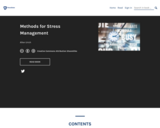
This text is an introduction to methods for stress management.
- Subject:
- Applied Science
- Health, Medicine and Nursing
- Material Type:
- Textbook
- Provider:
- Penn State Pressbooks
- Author:
- Allen Urich
- Date Added:
- 12/01/2020
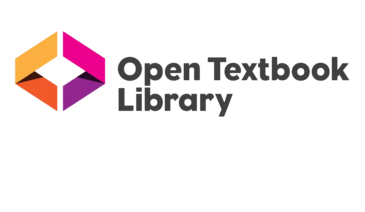
Browse OER Textbooks from the University of Minnesota's Open Textbook Library. These textbooks are authored and peer reviewed by faculty or other accredited subject matter experts. Many of these textbooks are actively used to teach OER based courses at instiutions across the United States.

This text is an introduction to methods for stress management.
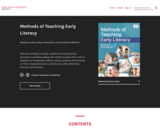
This open textbooks covers theories, teaching strategies, and instructional materials pertinent to teaching reading and writing in grades PK-3, with an emphasis on integrating reading, writing, speaking, and listening, as well as integration across content areas while addressing diversity and inclusion.
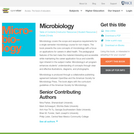
Microbiology covers the scope and sequence requirements for a single-semester microbiology course for non-majors. The book presents the core concepts of microbiology with a focus on applications for careers in allied health. The pedagogical features of the text make the material interesting and accessible while maintaining the career-application focus and scientific rigor inherent in the subject matter. Microbiology’s art program enhances students’ understanding of concepts through clear and effective illustrations, diagrams, and photographs.

Short Description:
Return to milneopentextbooks.org to download PDF and other versions of this textNewParaAs a group of organisms that are too small to see and best known for being agents of disease and death, microbes are not always appreciated for the numerous supportive and positive contributions they make to the living world. Designed to support a course in microbiology, Microbiology: A Laboratory Experience permits a glimpse into both the good and the bad in the microscopic world. The laboratory experiences are designed to engage and support student interest in microbiology as a topic, field of study, and career.NewParaThis text provides a series of laboratory exercises compatible with a one-semester undergraduate microbiology or bacteriology course with a three- or four-hour lab period that meets once or twice a week. The design of the lab manual conforms to the American Society for Microbiology curriculum guidelines and takes a ground-up approach -- beginning with an introduction to biosafety and containment practices and how to work with biological hazards. From there the course moves to basic but essential microscopy skills, aseptic technique and culture methods, and builds to include more advanced lab techniques. The exercises incorporate a semester-long investigative laboratory project designed to promote the sense of discovery and encourage student engagement. The curriculum is rigorous but manageable for a single semester and incorporates best practices in biology education.
Long Description:
As a group of organisms that are too small to see and best known for being agents of disease and death, microbes are not always appreciated for the numerous supportive and positive contributions they make to the living world. Designed to support a course in microbiology, Microbiology: A Laboratory Experience permits a glimpse into both the good and the bad in the microscopic world. The laboratory experiences are designed to engage and support student interest in microbiology as a topic, field of study, and career.
Word Count: 37934
ISBN: 978-1-942341-54-3
(Note: This resource's metadata has been created automatically by reformatting and/or combining the information that the author initially provided as part of a bulk import process.)

Microbiology for Allied Health Students is designed to cover the scope and sequence requirements for the single semester Microbiology course for non-majors and allied health students. The book presents the core concepts of microbiology with a focus on applications for careers in allied health. The pedagogical features of Microbiology for Allied Health Students make the material interesting and accessible to students while maintaining the career-application focus and scientific rigor inherent in the subject matter.
The scope and sequence of Microbiology for Allied Health Students has been developed and vetted with input from numerous instructors at institutions across the U.S. It is designed to meet the needs of most microbiology courses allied health students.
With these objectives in mind, the content of this textbook has been arranged in a logical progression from fundamental to more advanced concepts. The opening chapters present an overview of the discipline, with individual chapters focusing on cellular biology as well as each of the different types of microorganisms and the various means by which we can control and combat microbial growth. The focus turns to microbial pathogenicity, emphasizing how interactions between microbes and the human immune system contribute to human health and disease. The last several chapters of the text provide a survey of medical microbiology, presenting the characteristics of microbial diseases organized by body system.
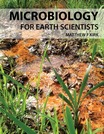
Microorganisms are the most abundant form of life on Earth and in recent decades it has become increasingly clear that their collective activities are one of the dominant forces shaping the planet.
This book provides earth scientists with an introduction to microbiology and a look at the ways microorganisms are important to their area of expertise. The first part of this book summarizes some basic information about microorganisms, including a discussion of their diversity, physical properties, and metabolisms. From there, the second and third portions of the book are organized around the two-way interactions between microorganisms and their environments. The second portion of the book considers the ways that environmental conditions help determine distributions of microbial activity, including chapters focused on thermodynamic, kinetic, and biological factors. The third and final portion of the book examines the impacts of microbes on their environments. These impacts are placed within the context of earth system science, with chapters focused on impacts to the lithosphere, atmosphere, and hydrosphere. In these chapters, emphasis is placed on microbial impacts to greenhouse gas levels and the quality of water resources, underscoring the relevance of microbiology to environmental concerns of keen interest in the earth science community and beyond.
This book is specifically designed for earth science students and can provide a helpful free resource for students in Geomicrobiology courses. However, portions of the book can also have value for students and professionals from any field who are interested in environmental microbiology.
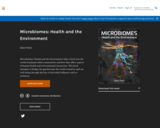
Short Description:
Microbiomes: Health and the Environment takes a look into the world of polymicrobial communities and how they affect aspects of human health and environmental interaction. This book attempts to bridge the gap between the world around us and our well-being through the lens of microbial influence and co-evolution.
Long Description:
Microbiomes: Health and the Environment was created to provide accessible insight into the novel and complex world of polymicrobial community interactions. As we push forward into the future of medicine and environmental health, it is imperative that we learn from each other, from history, and keep up to date with the latest advances in research and technology. This book not only provides content from the latest microbiome studies, but contains interactive tools, videos, and thought-provoking questions to help the reader hone and truly understand the respective topic. Though there is much overlap between themes due to the ubiquitous nature of microbes, the book is broken down into sections pertaining to both human health (e.g., gut health and disease, as well as other organ-specific niches) and aspects of the environment (e. g., nutrient cycling and climate change, marine health, soil and plant health, etc.) influenced by microbes. However, the content is designed to bridge ideas and aspects between these themes to support the One Health concept: that the health of people, animals, and the environment are all interconnected. This project will continue to grow with new findings, and adapt with the ever-changing world of microorganisms.
Word Count: 144338
Included H5P activities: 14
ISBN: 978-1-64816-002-8
(Note: This resource's metadata has been created automatically as part of a bulk import process by reformatting and/or combining the information that the author initially provided. As a result, there may be errors in formatting.)
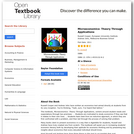
Russell Cooper and Andrew John have written an economics text aimed directly at students from its very inception. You're thinking, ”Yeah, sure. I've heard that before.“
This textbook, Microeconomics: Theory Through Applications, centers around student needs and expectations through two premises: … Students are motivated to study economics if they see that it relates to their own lives. … Students learn best from an inductive approach, in which they are first confronted with a problem, and then led through the process of solving that problem.
Many books claim to present economics in a way that is digestible for students; Russell and Andrew have truly created one from scratch. This textbook will assist you in increasing students' economic literacy both by developing their aptitude for economic thinking and by presenting key insights about economics that every educated individual should know.
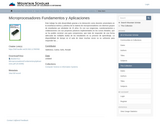
Este trabajo ha sido desarrollado gracias a la interacción como docente universitario en la enseñanza teórica y práctica de la materia de microprocesadores con diversos grupos de estudiantes por alrededor de 15 años. Es con sus exigencias, cuestionamientos y colaboraciones con sus proyectos prácticos implementados en los cursos dictados, que se ha podido construir una guía comprensiva, que trate de responder de una forma adecuada las múltiples dudas de los estudiantes en su proceso de aprendizaje.
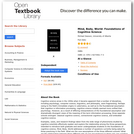
Cognitive science arose in the 1950s when it became apparent that a number of disciplines, including psychology, computer science, linguistics, and philosophy, were fragmenting. Perhaps owing to the field’s immediate origins in cybernetics, as well as to the foundational assumption that cognition is information processing, cognitive science initially seemed more unified than psychology. However, as a result of differing interpretations of the foundational assumption and dramatically divergent views of the meaning of the term information processing, three separate schools emerged: classical cognitive science, connectionist cognitive science, and embodied cognitive science.
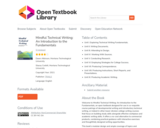
Welcome to Mindful Technical Writing: An Introduction to the Fundamentals, an open textbook designed for use in co-requisite course pairings of developmental writing and introductory technical writing, or indeed in other lower-division college writing courses that focus on building study skills alongside effective workplace and academic writing skills. It offers a no-cost alternative to commercial products, combining practical guidance with interactive exercises and thoughtfully designed writing opportunities.

Welcome to Mindful Technical Writing: An Introduction to the Fundamentals, an open textbook designed for use in co-requisite course pairings of developmental writing and introductory technical writing, or indeed in other lower-division college writing courses that focus on building study skills alongside effective workplace and academic writing skills. It offers a no-cost alternative to commercial products, combining practical guidance with interactive exercises and thoughtfully designed writing opportunities.
This book’s modular design and ample coverage of topics and genres means that it can be used flexibly over semester-long or stretch courses, allowing instructors and students to select the chapters that are most relevant for their needs. By blending new material with reviews of key topics, such as academic integrity, the chapters provide fresh perspectives on matters vital to the development of strong writing skills.
This book was made possible through grant support from Montana Technological University and the TRAILS OER program, funded by the Office of the Commissioner for Higher Education, Montana University System.

Short Description:
Return to milneopentextbooks.org to download PDF and other versions of this textNewParaWeb development is an evolving amalgamation of languages that work in concert to receive, modify, and deliver information between parties using the Internet as a mechanism of delivery.NewParaWhile it is easy to describe conceptually, implementation is accompanied by an overwhelming variety of languages, platforms, templates, frameworks, guidelines, and standards. Navigating a project from concept to completion often requires more than mastery of one or two complementing languages, meaning today’s developers need both breadth, and depth, of knowledge to be effective.NewParaThis text provides the developer with an understanding of the various elements of web development by focusing on the concepts and fundamentals through the examples within, providing a foundation that allows easier transition to other languages and a better understanding of how to approach their work. The reader will be introduced to topics in a manner that follows most project development methods, from initial conceptualization and design through front end development, back end development, and introducing additional concepts like accessibility and security, while focusing on responsive design techniques. Each section of the text includes opportunities to practice the material and assess increased knowledge after examining the topics.
Long Description:
This text provides the developer with an understanding of the various elements of web development by focusing on the concepts and fundamentals through the examples within, providing a foundation that allows easier transition to other languages and a better understanding of how to approach their work. The reader will be introduced to topics in a manner that follows most project development methods, from initial conceptualization and design through front end development, back end development, and introducing additional concepts like accessibility and security, while focusing on responsive design techniques. Each section of the text includes opportunities to practice the material and assess increased knowledge after examining the topics.
Word Count: 87300
ISBN: 978-0-9897226-5-0
(Note: This resource's metadata has been created automatically by reformatting and/or combining the information that the author initially provided as part of a bulk import process.)
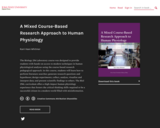
Short Description:
The Biology 256 Laboratory course was designed to provide students with hands-on access to modern techniques in human physiological analyses using the course-based research pedagogical approach. In this course, students will learn how to perform literature searches; generate research questions and hypotheses; design experiments; collect, analyze, visualize and interpret data; and present scientific findings to others. The Biol 256L curriculum offers a high-impact human physiology experience that fosters the critical thinking skills required to be a successful citizen in a modern world filled with misinformation.
Long Description:
The Biology 256 Fundamentals of Human Physiology Laboratory course was designed to provide students with hands-on access to modern techniques in human physiological analyses using the course-based research pedagogical approach. In this course, students will learn how to perform literature searches; generate research questions and hypotheses; design experiments; collect, analyze, visualize and interpret data; and present scientific findings to others. The Biol 256L curriculum offers a high-impact human physiology experience that fosters the critical thinking skills required to be a successful citizen in a modern world filled with misinformation.
Word Count: 53567
(Note: This resource's metadata has been created automatically by reformatting and/or combining the information that the author initially provided as part of a bulk import process.)

Modeling, Functions, and Graphs covers the content of a typical college algebra course with an emphasis on functions and modeling; when combined with a trigonometry text or supplement, this text can be used in a precalculus course.
The text employs a variety of applications to motivate mathematical thinking. Each chapter opens with a problem of historical or contemporary significance highlighting the material in the chapter, and includes by an Investigation that previews the skills to be introduced. These Investigations can be used in class as guided explorations or as projects for small groups. We have also provided a set of more challenging Projects at the end of each chapter.
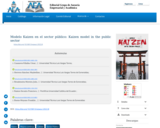
Las instituciones del sector público deben acogerse a las necesidades emanadas por sus usuarios, por esto son controladas por diferentes entidades gubernamentales y cumplen diferentes normativas legales. Bajo este enfoque surgen diferentes metodologías para la eficiencia y eficacia, el libro responde a un modelo “Kaizen” pero bajo la metodología gubernamental de Gobierno por Resultados.
El modelo presentado utiliza herramientas de calidad como identificación de las mudas que corresponden a los desperdicios, aplicación de las 5s que es una metodología aplicada a la limpieza, orden, planificación, seguridad y autodisciplina, estas dos herramientas bajo un esquema PHVA que no es más que el proceso de planificar, hacer, verificar y actuar. Para poder aplicar este modelo se debe obtener datos de los procesos y actividades, con lo cual se tiene un antecedente y poder medir el cumplimiento de los objetivos institucionales

A free, Open Educational Resource, Modern Blueprint for College and Career Success is a post pandemic, students' guide for classroom and career success. Covering student success strategies, self-management, career development, health and wellness, self and cultural awareness, social development, and financial literacy, Modern Blueprint includes relevant content for students attending college with an equity perspective.
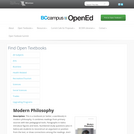
This is a textbook (or better, a workbook) in modern philosophy. It combines readings from primary sources with two pedagogical tools. Paragraphs in italics introduce figures and texts. Numbered study questions (also in italics) ask students to reconstruct an argument or position from the text, or draw connections among the readings. And I have added an introductory chapter (Chapter 0 Minilogic and Glossary), designed to present the basic tools of philosophy and sketch some principles and positions. The immediate goal is to encourage students to grapple with the ideas rather than passing their eyes over the texts. This makes for a better classroom experience and permits higher-level discussions. Another goal is to encourage collaboration among instructors, as they revise and post their own versions of the book.

Welcome to Modern World History! This is the textbook for an undergraduate survey course taught at all the universities and most of the colleges in the Minnesota State system. Similar courses are taught at institutions around the United States and the world, so the authors have made the text available as an open educational resource that teachers and learners can read, adapt, and reuse to meet their needs. We’d like to hear from people who have found the text useful, and we’re always open to questions and suggestions.
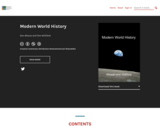
Word Count: 132221
(Note: This resource's metadata has been created automatically by reformatting and/or combining the information that the author initially provided as part of a bulk import process.)